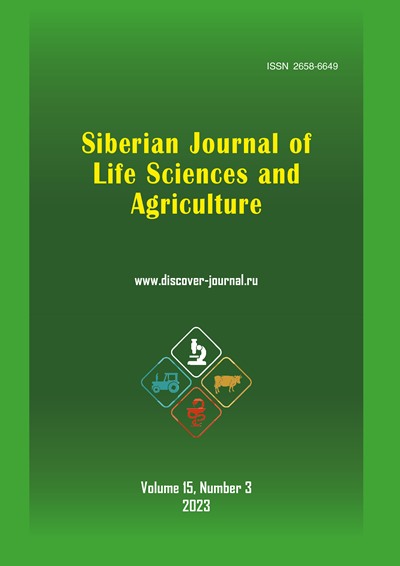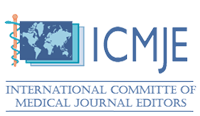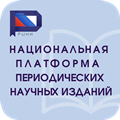SENSORY EVALUATION OF GAYO PEABERRY ARABICA COFFEE BY USING THE AHP METHOD
Аннотация
As other peaberrys, Gayo peaberry arabica coffee is very attractive because it has single larger and rounder seed. It is believed that the peaberry has superior flavor profile such as more fragrant aroma, stronger flavor, and denser than other arabica coffees. The purpose of this study was to evaluate the Gayo peaberry arabica coffee by using the analytical hierarchy process (AHP) method. Three varieties of Gayo peaberry arabica coffee were investigated i.e., Tim-tim, Bor-bor, and P88, while the processing method used were semi-wash and fully-wash methods. The sensory parameters observed included fragrance, flavor, acidity, body, and sweetness. The results showed that flavor (0.338) was the most important criterion than other taste criteria (fragrance 0.241; sweetness 0.196; acidity 0.115; and body 0.111). The variety that had the highest product acceptance rate was the Tim-tim variety processed by a full-wash method with a value of 0.203. The overall result of data analysis was acceptable because it had a consistency ratio below 0.1 (10%).
Скачивания
Литература
Fadhil R., Maarif M.S., Bantacut T., Hermawan A. Assessment of Innovation Potential of Gayo Coffee Agroindustry. Quality Innovation Prosperity, 2017, vol. 21 (3), pp.114-126. https://doi.org/10.12776/qip.v21i3.888
Raharjo B.T. Analisis Penentu Ekspor Kopi Indonesia [Analysis of Determinants of Indonesian Coffee Exports]. Universitas Brawijaya. Malang, 2013.
Fadhil R., Maarif M.S., Bantacut T., Hermawan A. Formulation for development strategy of Gayo Coffee Agroindustry Institution Using Interpretive Structural Modelling (ISM). Acta Universitatis Agriculture et Silviculturae Mendeliane Brunensis, 2018, vol. 66 (2), pp.487-495. https://doi.org/10.11118/actaun201866020487
Meister E. What Makes Peaberry Coffee So Special. 2018. http://drinks. seriouseats.com/2011/Wont-you-be-my-peaberry-what-are-peaberrycoffee-beans.html
Pimenta T.V., Pereira R.G.F.A., Correa J.L.G., Silva J.R. Roasting processing of dry coffee cherry: influence of grain shape and temperature on physical, chemical and sensorial grain properties. Boletim do Centro de Pesquisa de Processamento de Alimentos, 2009, vol. 27, no. 1.
Wahono B. Effects of peaberry coffee on the sexual behaviour and the blood testosterone levels of the male mouse (mus musculus). Proceeding 3rd International Conference on Research. Implementation and Education of Mathematics and Science, 16-17 May 2016, Yogyakarta, B21-B25.
Batch V., Kidmose U.I., Bjorn K.G.I., Edelenbos M. Effect of harvest time and variety on sensory quality and chemical composition of Jerusalem artichoke (Helianthus tuberosys) tubers. Food Chemistry, 2012, vol. 133, pp. 82-89. https://doi.org/10.1016/j.foodchem.2011.12.075
Kraujalytė K., Leitner R.P. Venskutonis, Chemical and sensor characterisation of aroma of Viburnum opulus fruits by solid phase microextraction-gas chromatography-olfactometry. Journal Food Chemistry, 2012, vol. 132 (2), pp. 717-723. https://doi.org/10.1016/j.foodchem.2011.11.007
Saaty T.L. Decision making with the analytic hierarchy process. International Journal of Services Sciences, 2008, vol. 1 (1), pp. 83-98. https://doi.org/10.1504/IJSSCI.2008.017590
Fadhil R., Maarif M.S., Bantacut T., Hermawan A. A prospective strategy for institutional development of Gayo coffee agroindustry in Aceh province, Indonesia. Bulgarian Journal of Agricultural Science, 2018, vol. 24 (6), pp. 959–966. http://www.agrojournal.org/24/06-05.pdf
Najiyati S., Danarti. Kopi, Budidaya dan Penanganan Lepas Panes [Cultivation and Off-Harvest Handling]. Jakarta: Penerbar Swadaya, (in Indonesian), 2004.
Expert-Choice. Expert choice version 11. Expert choice resource aligner. Expert Choice, Inc, 2004.
Najla M., Shajina. Decision Making in Crane Selection: AHP and Expert Choice Approach. International Journal of Science and Research, 2016, vol. 7 (4), pp. 1317-1318. https://www.ijsr.net/archive/v7i4/ART20181626.pdf
Hidayatullah, Fauzan A. Pengaruh Lingkungan dan Elevasi Terhadap Kualitas Fitokimia dan Cita Rasa Kopi Robusta Muria Kudus. Jurnal Bioterdidik: Wahana Ekspresi Ilmiah, 2020, vol. 8 (3), pp. 17-32. http://dx.doi.org/10.23960/jbt.v8i3.21629
Hayati R., Marliah A. Rosita F. Sifat Kimia dan Evaluasi Sensori Bubuk Kopi Arabika. Jurnal Floratek, 2012, vol. 7 (1), pp. 66-75. https://core.ac.uk/download/pdf/289895452.pdf
Ranitaswari P.A., Mulyani S., Sadyasmara C.A.B. Analisis Kepuasan Konsumen Terhadap Kualitas Produk Kopi dan Kualitas Pelayanan menggunakan Metode Importance Perfomance Analysis (Studi Kasus Di Geo Coffee) [Analysis of Consumer Satisfaction of Coffee Product Quality and Service Quality using the Importance Performance Analysis Method (Case Study in Geo Coffee)]. Jurnal Rekayasa dan Manajemen Agroindustri, 2018, vol. 6 (2), pp. 147-157.
Clarke C. The Science of ice cream. Cambridge: The Royal Society of Chemistry. 2004.
Esquivel P., Victor M., Jimenez. Functional Properties of Coffee and Coffee by Products. Food Research International, 2012, vol. 46, pp. 488-495. https://doi.org/10.1016/j.foodres.2011.05.028
Baggenstoss J. Coffee Roasting and Quenching Technology Formation and Stability of Aroma Compounds. Doctoral thesis, Zürich: Eidgenössische Technische Hochschule. 2008.
Purwanto E.H., Rubiyo R., Towaha J. Karakteristik Mutu dan Citarasa Kopi Robusta Klom BP 42, BP 358, dan BP 308 Asal Bali dan Lampung [The development of quality fragrance coffee drink through planning of wanatani cultivation: Forest forests Batutegi Lampung]. SIRINOV, 2015, vol. 3 (2), pp. 67 –74.
Sulistyowati. Metode uji citarasa Kopi. Materi Pelatihan Uji Citarasa Kopi [Coffee flavor test method. Coffee Flavor Test Training Materials]. Pusat Penelitian Kopi dan Kakao Indonesia. Jember, 2002.
SCAA [Specialty Coffee Association of America]. SCAA Protocols: Cupping Specialty Coffee. Specialty Coffee Association of America, 2015. https://www.scaa.org/PDF/resources/cupping-protocols.pdf
Janzen S.O. Chemistry of coffee. In L. Mender, & H.W. Liu (Eds.), Comprehensive Natural Products II. Kidlington, UK: Elsevier Ltd. Chemistry and Biology, 2010, pp. 1085-1113.
Oktadina F.D., Argo B.W., Hermawanto M.B. Pemanfaatan Nanas (Ananasconosus L. Merr) Untuk Penurunan Kadar Kafein dan Perbaikan Citarasa Kopi (Coffee sp) dalam Pembuatan Kopi Bubuk [Utilization of Pineapple (Ananasconosus L. Merr) to Decrease Caffeine Levels and Improve Coffee Taste (Coffee sp) in Making Ground Coffee)]. Jurnal Keteknikan Pertanian Tropis dan Biosistem, 2013, vol. 1 (3), pp. 265-273. https://jkptb.ub.ac.id/index.php/jkptb/article/view/149/140
Dairobi A., Irfan I., Sulaiman I. Kajian Mutu Wine Coffee Arabika Gayo [Quality Study of Wine Coffee Arabika Gayo]. Jurnal Ilmiah Mahasiswa Pertanian Unsyiah, 2017, vol. 2(4), pp. 822-829. https://jim.unsyiah.ac.id/JFP/article/view/5426/4972
Cheng B., Furtado A., Smyth H.E., Henry R.J. Influence of Genotype and Environment on Coffee Quality. Trend in Food Science and Technology, 2016, vol. 57(A), pp. 20-30. https://doi.org/10.1016/j.tifs.2016.09.003
Anggara A., Marini S. Kopi Si Hitam Menguntungkan Budidaya dan Pemasaran [Si hitam coffee is profitable for cultivation and marketing], Yogyakarta: Cahaya Atma Pustaka, 2011.
Pangabean E. Buku Pintar Kopi, Jakarta: PT Agro Media Pustaka. 2011.
Taba J. Coffee Taste Analysis of an Espresso Coffee Using Nuclear Magnetic Spectroscopy. Bachelor Thesis Central Ostrobothnia. University of Applied Sciences, Eindhoven, Holland, 2012.
Yusianto, Hulupi R., Sulistyowati, Mawardi S., Ismayadi C. Sifat Fisik Kimia dan Citarasa beberapa Varietas Kopi Arabika [Physical, Chemicals and Flavors of Some Varieties of Arabica Coffee]. Pelita Perkebunan, 2005, vol. 21 (3), pp. 200-222.
Bekele G., Bellachew B., Adugna G., Benti T., Ayano A., Laboisse J.P., Ribeyre F., Bertrand B. Strengthening Arabica Coffee Quality Breeding Research Strategy in Ethiopia with Respective terroir, Proceeding of 23rd International Conference on Coffee Science, Bali Indonesia, October 3-8, 2010, Indonesia.
Supriadi H., Randriani E., Towaha J. Korelasi Antara Ketinggian Tempat, Sifat Kimia Tanah, dan Mutu Fisik Biji Kopi Arabika di Dataran Tinggi Garut [Correlation Between Altitude, Soil Chemical Properties, and Physical Quality of Arabica Coffee Beans in Highland Areas of Garut]. Jurnal Tanaman Industri dan Penyegar, 2016, vol. 3 (1), pp. 45-52.
Joet T., Laffargue A., Descoix F., Doulbeau S., Betrand B., De Kochko A., Dusse S. Influence of Environmental factors, Wet Processing and Their Interactions on the Biochemical Composition of Green Arabica Coffee Beans. Food Chemistry, 2010, vol. 118 (3), pp. 693-701. https://doi.org/10.1016/j.foodchem.2009.05.048
Tari W. Safrizal S., Fadhil R. Evaluasi Sensori Kopi Arabika Gayo Berbagai Varietas berdasarkan Proses Pengolahan Basah dan Semi Basah menggunakan Metode AHP (Analytical Hierarchy Process). Jurnal Ilmiah Mahasiswa Pertanian, 2022, 7.2.
Wahyuni E., Karim A., Anhar A. Analisis Citarasa Kopi Arabika Organik pada Beberapa Ketinggian Tempat dan Cara Pengolahannya di Datararan Tinggi Gayo [Analysis of the Taste of Organic Arabica Coffee at Several Altitude Places and Processing Method in the Gayo Highlands]. Jurnal Manajemen Sumberdaya Lahan, 2013, vol. 2 (3), pp. 261–269. https://jurnal.usk.ac.id/MSDL/article/view/2199/2153
Ferreira G.F., De-Novaes Q.S., Malta M.R., De-Souza S.E. Quality of Coffee Produced in The Southwest Region of Bahia, Brazil Subjected to Different forms of Processing and Drying. African Journal of Agricultural Research, 2013, vol. 8 (20), pp. 2334-2339. https://doi.org/10.5897/AJAR2013.7038
Arruda N.P., Hovell A.M.C., Rezende C.M., Freitas S.P., Couri S., Bizzo H.R. Arabica Coffee Discrimination Between Maturation Stages and Post Harvesting Processing Types Using Solid Phase Microextraction Coupled to Gas Chromatography and Principal Component Analysis. Quimica Nova, 2011, vol. 34 (5), pp. 819-824.
Kementan. Statistik Pertanian 2017 (Agricultural Statistics). Pusat Data dan Sistem Informasi Pertanian. Kementerian Pertanian. Jakarta, 2017.
Upadhyay K. Application of Analytical Hierarchy Process in Evaluation of Best Sewage Treatment Plant. International Journal of Science and Research, 2015, vol. 6 (6), pp. 259-264. https://www.ijsr.net/archive/v6i6/ART20174144.pdf
Saaty T.L. Decision Making for Leader. The Analytical Hierarchy Process for Decision in Complex Word. Prentice Hall Coy: Ltd, Pittsburgh. 1993.
Padmowati, R.D.L.E. Pengukuran index konsistensi dalam proses pengambilan keputusan menggunakan metode AHP. In: Seminar Nasional Informatika (SEMNASIF). 2015.
Ishizaka A., Labib A. Analytic Hierarchy Process and Expert Choice: Benefit and limitations. OR Insight, 2009, vol. 22 (4), pp. 201-220. https://doi.org/10.1057/ori.2009.10
Просмотров аннотации: 414 Загрузок PDF: 277
Copyright (c) 2023 R. Fadhil, S. Safrizal, P. Navisah

Это произведение доступно по лицензии Creative Commons «Attribution-NonCommercial-NoDerivatives» («Атрибуция — Некоммерческое использование — Без производных произведений») 4.0 Всемирная.






















































